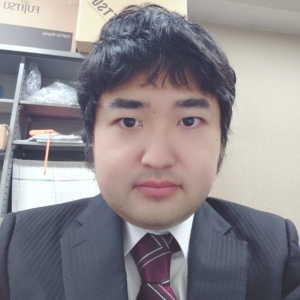What is Data-Driven Signal Dynamics?

DESIGN THE FUTURE SOCIETY BASED ON SIGNAL PROCESSING TECHNOLOGY
Associate Professor
Dr. Norifumi KAWABATA
Department of Economic Informatics, Faculty of Economic Informatics, Kanazawa Gakuin University (Since April 1, 2023)

Professional Research Field: Signal Processing, Image Processing, Multimedia, Programming, Information and Computer Systems
Research Keywords: Color Information Engineering, Computer Graphics, Visual Media, Medical System, Mobility Society System, Computational Imaging System
- 1. What is Data-Driven Signal Dynamics?
- 2. Motto of Data-Driven Signal Dynamics
- 3. Obtaining necessary data as “signals" from economic information to realize a future-oriented data-driven society and state-of-the-art information systems
- 4. Solutions to realistic economic and information society problems derived from both software and hardware programming design related to signal processing technology
- 5. Training future data scientists and system engineers based on mathematical, data science, and AI education
What is Data-Driven Signal Dynamics?
Data-Driven Signal Dynamics originated from a research group that was established as the Image Processing Group when Kawabata was appointed Assistant Professor in the Department of Information Sciences, Faculty of Science and Technology, Tokyo University of Science on April 1, 2019. After that, the name was changed to Computational Imaging Field on June 1, 2020, and until July 31, 2021, it was one of the research groups in the Computer Science Group, the Department of Information Sciences, Faculty of Science and Technology, Tokyo University of Science. After Dr. Kawabata moved to Nagoya University Hospital as an Assistant Technical Staff of Medical IT Center, the activity was temporarily suspended, but resumed step by step on October 1, 2021, when Dr. Kawabata was appointed as a Specially Appointed Assistant Professor in the Education and Research Center for Mathematical and Data Science, Hokkaido University. Since April 1, 2022, we have been conducting research activities on image information processing based on mathematical and data science as an independent laboratory, Computational Imaging Lab, Sapporo, Japan but as of April 1, 2023, Kawabata has joined Kanazawa Gakuin University as an Associate Professor, and Kawabata Lab and Seminar will be established as Data-Driven Signal Dynamics. Dr. Kawahata’s main research interest is multimedia signal processing. His research on multimedia signal processing includes not only signal processing theory, but also image science fields such as color information engineering, computer graphics, and visual information science, as well as multimedia fields that consider audio-visual complex information processing including speech and language. In addition, there are fusion research activities in related fields of information science (information theory, coding theory, hardware design, software science, computation theory, etc.), medical systems, and mobility social systems, as well as research activities from the viewpoint of mathematical and data science to obtain and analyze important information from unknown big data related to economic information. It is becoming necessary to acquire and analyze important information from unknown big data about economic information from the viewpoint of mathematics and data science, and to implement it in society as an information system.
Motto of Data-Driven Signal Dynamics
- Acquire the economic information technology required for a data-driven society.
- Acquire the signal processing technology required for a data-driven society.
- Acquire image processing techniques required for a data-driven society.
- Acquire multimedia processing technologies (audio-visual complex information processing technologies including video, audio, music, and language) required for a data-driven society.
- Acquire programming design, software design, hardware design, and information system design techniques required for a data-driven society.
- Acquire the applied fundamentals of mathematics, data science, and AI technologies required for a data-driven society.
- Cultivate research and development skills and communication skills related to signal processing required for a data-driven society.
Obtaining necessary data as “signals" from economic information to realize a future-oriented data-driven society and state-of-the-art information systems
Personal computers have become capable of processing information on a large scale due to their increased speed and performance. On the other hand, economic information in the world (finance, newspapers, mass media, corporate management, real estate, etc.) has become enormous, and the relationships among them may seem complicated at first glance, but by considering these data as “signals," it is possible to extract important information from enormous and complex-looking data. By adopting the concept of data-driven computing, which is a computational model in computer science in which data generated by one computation triggers the next computation and a series of computation is executed one after another, our laboratory aims to realize a future-oriented data-driven society and forward-looking, state-of-the-art information systems by integrating information science and information engineering. We aim to realize a future-oriented data-driven society and forward-looking state-of-the-art information systems that integrate information science and information engineering.
Solutions to realistic economic and information society problems derived from both software and hardware programming design related to signal processing technology
When dealing with economic information in consideration of signal processing, image processing, and multimedia processing, it is necessary to determine on a case-by-case basis whether or not they are useful in solving problems facing the realistic economic information society. As a means to achieve this, we need to study the fundamental theories of informatics, such as software systems (programming, formal methods, programming language processing systems such as compilers, automata, and formal language theory, etc.) and hardware systems (information systems, embedded systems, information usability, etc.), especially those related to signal processing, in order to understand the real economic, information, and social problems. It is necessary to incorporate fundamental informatics theories such as hardware systems (information systems, embedded systems, information usability, etc.) into real economic and information society problems, especially those related to signal processing. Our laboratory aims to solve real-world problems derived from the programming design of both software and hardware related to signal processing technology.
Training future data scientists and system engineers based on mathematical, data science, and AI education
Currently, there is a shortage of data scientists and system engineers (especially in embedded systems and information systems) in Japan compared to the rest of the world, and data science and digital transformation technologies are needed not only in universities but also in society as a whole. Our laboratory conducts basic and practical education and research in mathematical and data science necessary for society, and actively utilizes mathematical and data science and AI in research and system development related to multimedia signal processing. We also actively support the acquisition of national qualifications in mathematics and information science and language qualifications for the development of future data scientists and system engineers, as well as participation in the World International University Programming Contest and educational activities.
